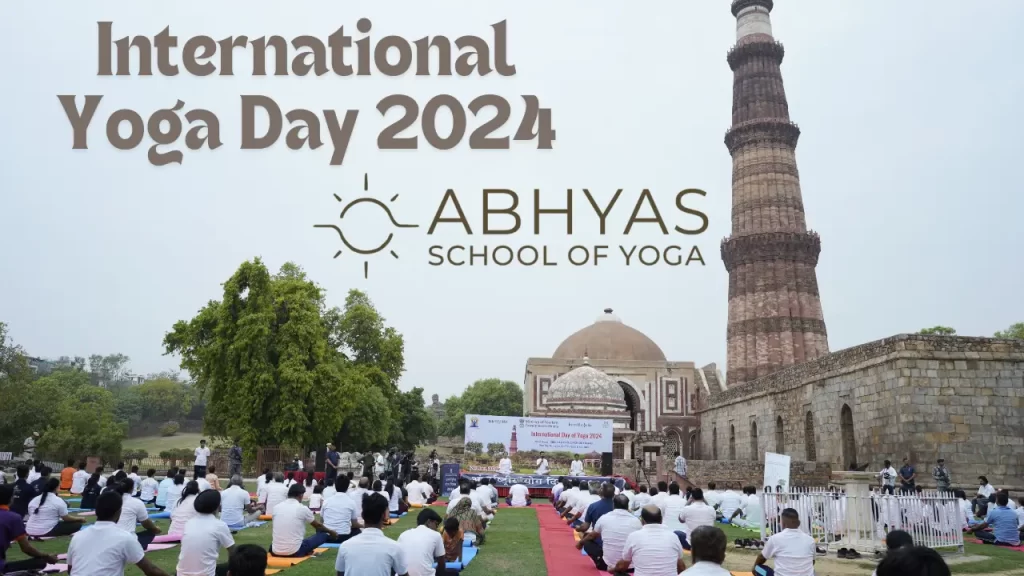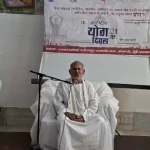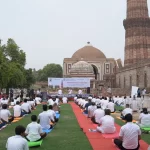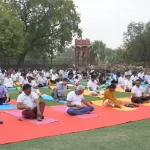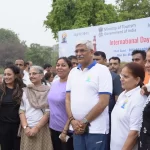Yoga has been increasing in popularity globally, and what better occasion to mark this ancient practice than with an International Yoga Day! In this blog post, we’ll delve into the history, benefits, and ways to commemorate this significant day. Prepare to unite your mind, body, and spirit on June 21st.
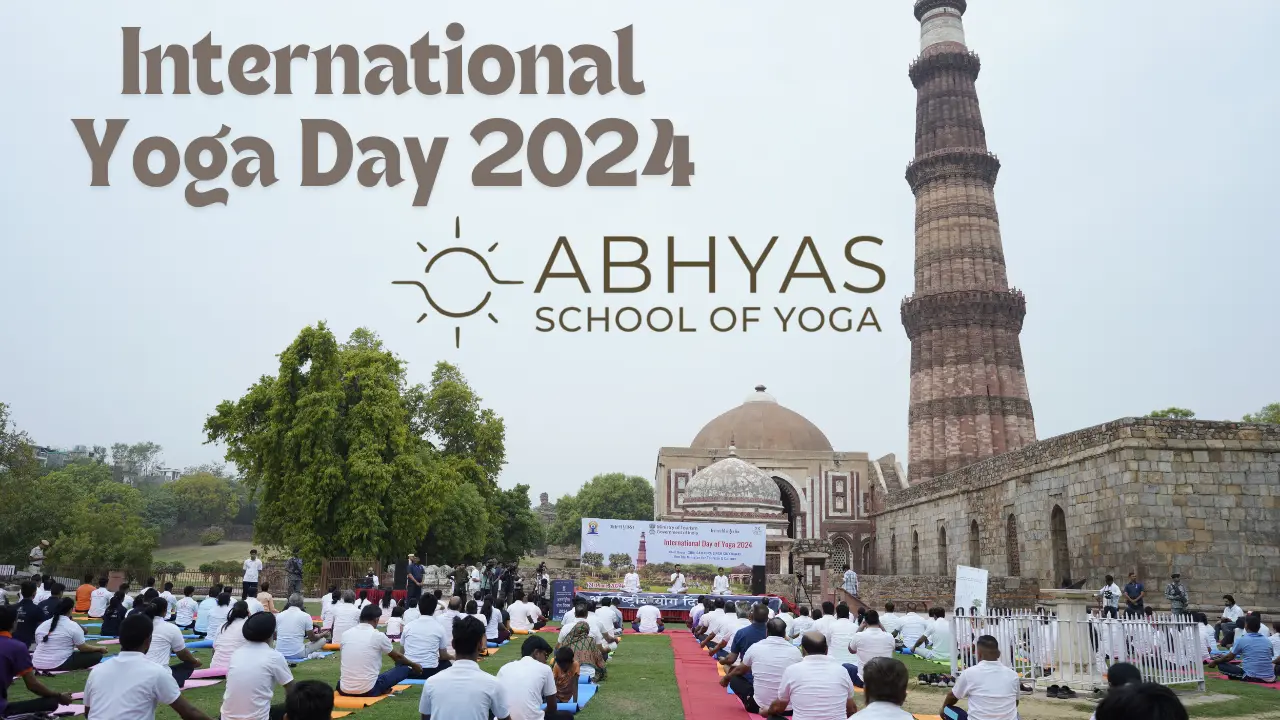
On this significant day, you have the opportunity to engage in a wide range of yoga events and classes taking place worldwide. Many yoga studios, community centers, and fitness facilities host special workshops, meditation sessions, and outdoor yoga gatherings to honor International Yoga Day. Furthermore, various online platforms provide virtual classes and workshops for individuals who prefer practicing at home or are unable to attend in-person events. Whether you are an experienced yogi or a novice, there are abundant opportunities to engage in this ancient practice and reap its holistic benefits. Stay updated on local events and virtual options to fully embrace this global celebration!
When did International Yoga Day begin and why is it important?
International Yoga Day was established on June 21st, 2015 by the United Nations General Assembly, after a proposal by Indian Prime Minister Narendra Modi. This day aims to raise awareness and promote the benefits of practicing yoga for physical, mental, and spiritual well-being. Since then, it has been celebrated annually on June 21st across the globe with various events and activities.
International Yoga Day, celebrated on June 21st each year, is an important global event that promotes the physical, mental and spiritual benefits of practicing yoga. It serves as a reminder to people all around the world to take time for self-care and to connect with their inner selves. Not only does yoga improve flexibility and strength, but it also helps reduce stress and anxiety, bringing balance and peace into our lives.
This day highlights the universality of this ancient practice, bringing together people from different cultures and backgrounds in a shared celebration of wellbeing. By commemorating International Yoga Day, we are spreading awareness about the profound impact of yoga on our overall well-being and emphasizing its role in fostering harmony and unity across the globe. Through the practice of yoga, individuals can cultivate a deeper understanding of themselves and their connection to others, promoting a sense of interconnectedness and compassion.
International Yoga Day provides a platform for people from diverse backgrounds to come together and celebrate the transformative power of yoga, creating a global community dedicated to holistic health and inner peace. As we approach this significant day, let us embrace the opportunity to partake in the various events and activities available, whether in-person or virtually, and join millions worldwide in celebrating the timeless wisdom of yoga.
The historical roots and ancient origins of yoga
Yoga is a practice that aims to enhance and cultivate one’s innate abilities in a harmonious way. It provides a pathway to achieve full self-awareness.
योगश्चित्तवृत्तिनिरोधः ॥२॥
yoga citta-vtti-nirodha
— Yoga Sutras 1.2
Yoga is the cessation of the fluctuations of the mind.
According to Maharishi Patanjali, Yoga is the suppression of modifications of the mind.
In this particular philosophy, the term Yoga is utilized to denote Samadhi or concentration.
Another interpretation of the term is Yogya, thought to be an ancient Aryan term found in later Sanskrit literature of the Upanishads. Likewise, the concept of Yoga as an endeavor could have been inspired by a metaphor derived from the stretching of a bow, symbolizing the ancient idea of controlling or harnessing the senses, which were seen as unruly horses.
The sutras are essential to understand temporary yoga. They are categorized into four chapters: Samadhi-pada, Sadhana-pada, Vibhuti-pada, and Kaivalya-pada, with the journey beginning in the introductory chapter.
The origin of Yoga can be traced back to the root word “yuj,” which signifies joining, union, or control. However, Yoga is primarily a practice focused on achieving stillness, whether it’s in the body, breath, or mind. The specific focus of what is to be joined or united varies depending on the time period and the yogic tradition. In Patanjali’s yoga, the goal is isolation: the dis-union (vi-yoga) of soul/consciousness and materiality.
The philosophy of Vihangam Yoga emphasizes the union of individual consciousness with divine consciousness as the fundamental concept of yoga. This union is achieved by calming our five senses and reconnecting with the Supreme Self, which is the underlying reality.
What are some typical Yoga poses for beginners?
For novice practitioners, specific yoga postures are often taught to establish a base of strength, flexibility, and balance. These postures are typically approachable, simple to grasp, and offer fundamental advantages of yoga. Below are some of the most frequently used yoga poses for beginners:
1. Tadasana, also known as Mountain Pose, is a fundamental standing posture that focuses on enhancing alignment, posture, and balance.
2. The Downward-Facing Dog (Adho Mukha Svanasana) is a fundamental yoga pose that provides a full-body stretch, focusing on the shoulders, hamstrings, and calves, while also developing strength in the arms and legs.
3. Child’s Pose (Balasana): A soothing posture that eases the back, hips, and thighs, offering a moment of relaxation within a yoga practice and promoting mental tranquility.
4. Warrior I (Virabhadrasana I): This standing pose is perfect for beginners as it helps to build strength in the legs, while also providing a gentle hip opening and chest and shoulder stretch.Warrior I (Virabhadrasana I): A beginner-friendly standing pose that strengthens the legs, opens the hips, and stretches the chest and shoulders.
5. Warrior II (Virabhadrasana II): This is another essential standing pose that enhances leg and core strength, as well as stamina, and also helps to improve focus and balance.
6. Triangle Pose (Trikonasana): This asana elongates the legs, opens the hips, and lengthens the spine, promoting enhanced stability and equilibrium.
7. The Cat-Cow Pose (Marjaryasana-Bitilasana) involves a gentle transition between two poses, which effectively warms up the spine, enhances flexibility, and fosters a mindful synchronization with the breath.
8. Seated Forward Bend (Paschimottanasana): This seated pose stretches the spine, shoulders, and hamstrings, aiding in flexibility improvement and promoting a sense of calm in the mind.
9. Bridge Pose (Setu Bandhasana): A gentle backbend that works to strengthen the back, glutes, and legs, while also opening the chest and enhancing spinal flexibility.
10. The Cobra Pose (Bhujangasana) is a gentle backbend that focuses on strengthening the spine and stretching the chest and abdomen, which helps improve posture.
11. Corpse Pose (Savasana): This relaxation pose is usually performed at the conclusion of a yoga session to bring together the practice and encourage profound relaxation and stress reduction.
These yoga poses are commonly featured in beginner yoga classes as they offer a simple yet thorough introduction to the physical and mental advantages of yoga.
How many countries celebrate International Yoga Day?
The International Day of Yoga is observed worldwide, with involvement from nations across the globe. Since being established by the United Nations in 2015, the day has garnered extensive recognition. While determining the precise count of participating countries annually is difficult, it is approximated that more than 190 countries join in the festivities.
The worldwide involvement encompasses yoga sessions, events, and activities arranged by governments, non-governmental organizations, and yoga practitioners to advocate the advantages of yoga. The annual observance on June 21st features events varying from extensive public gatherings to more intimate community sessions, showcasing the widespread appeal and increasing popularity of yoga.
Which yoga institution or school is dedicated to taking part in International Yoga Day in India?
In India, numerous renowned yoga organizations are committed to engaging in and advocating for International Yoga Day. Four of the most prominent ones include:
1. Vihangam Yoga:
Vihangam Yoga established by Sadguru Sadafaldeo Ji Maharaj, plays a vital role in the International Yoga Day. The organization hosts diverse yoga events, workshops, and classes in India and globally. Vihangam Yoga Organization focuses on promoting the spiritual advantages of yoga and meditation.
The core principle of Vihangam Yoga revolves around the practical belief that God exists and is consistently accessible for individuals to connect with. The present divine master of Vihangam Yoga is Sadguru Acharya Shri Swatantradeo ji Mahraj.
2. Abhyas School of Yoga:
The Abhyas School of Yoga, based in India, is another dedicated institution that actively participates in International Yoga Day celebrations. Founded by Sant Shri Naamdeo Ji Mahraj. The Abhyas School of Yoga focuses on traditional yoga practices, meditation of vihangam yoga, ayurvedic treatment with panchkarma, and teacher training program.
The school provides a range of yoga programs, such as teacher training, workshops, and regular classes, dedicated to the genuine teaching of yoga by Sadguru Sadfaldeo ji maharaj. During International Yoga Day, the Abhyas School of Yoga organizes events and activities that emphasize the significance of yoga in enhancing physical health, mental clarity, and overall well-being. These events typically feature public yoga sessions, informative talks, and community gatherings to promote and raise awareness about the advantages of yoga.
3. The Art of Living Foundation:
Founded by Sri Sri Ravi Shankar, this organization actively participates in International Yoga Day by organizing large-scale yoga events, workshops, and classes across India and globally. The Art of Living Foundation emphasizes the holistic benefits of yoga and meditation.
4. Isha Foundation:
Established by Sadhguru, the Isha Foundation is another key participant in International Yoga Day celebrations. The foundation conducts mass yoga sessions, awareness campaigns, and various yoga-related activities to promote physical and mental well-being.
These institutions play a significant role in promoting yoga on International Yoga Day and contribute to its widespread celebration across India and the world.
Conclusion
We believe that our International Yoga Day guide has offered valuable insights into the significance and benefits of this ancient practice. Embracing yoga as a part of your daily routine can foster better physical and mental well-being. Let’s collaborate towards attaining a healthier and more balanced lifestyle. Namaste.
is an ancient practice focusing on breathing, flexibili
ty and strength to boost mental and wellbeing. It is composed of a group of physical, mental, an practices or disciplines.
The main components of yoga are breathing and postures (a series of movements designed to increase strength and flexibility.)
The practice is said to have originated thousands of years ago in India and has been adapted in other countries in a variety of ways. Here we explore where it emerged from, what elements make yoga unique, and how it has been adopted by people all over the world.

